2,2'-Dithiobis(pyridine-N-oxide)
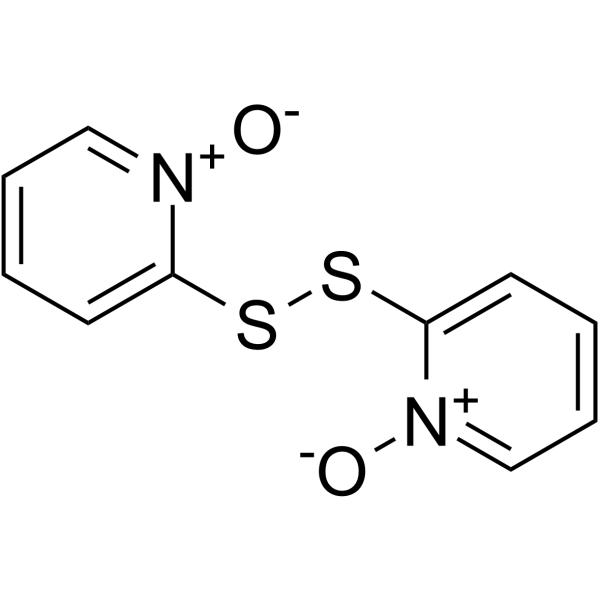
2,2'-Dithiobis(pyridine-N-oxide) structure
|
Common Name | 2,2'-Dithiobis(pyridine-N-oxide) | ||
|---|---|---|---|---|
| CAS Number | 3696-28-4 | Molecular Weight | 252.31300 | |
| Density | 1.38 g/cm3 | Boiling Point | 582.8ºC at 760 mmHg | |
| Molecular Formula | C10H8N2O2S2 | Melting Point | 205ºC | |
| MSDS | N/A | Flash Point | 306.2ºC | |
Use of 2,2'-Dithiobis(pyridine-N-oxide)Dipyrithione is a potent antimicrobial agent. Dipyrithione shows antifungal activity and antiproliferative activity. Dipyrithione induces apoptosis and cycle arrest at G1 phase. Dipyrithione shows anti-inflammatory activity in vivo. Dipyrithione shows anti-tumor activity. Dipyrithione has the potential for the research of dermatophytosis[1][2][3]. |
| Name | dipyrithione |
|---|---|
| Synonym | More Synonyms |
| Description | Dipyrithione is a potent antimicrobial agent. Dipyrithione shows antifungal activity and antiproliferative activity. Dipyrithione induces apoptosis and cycle arrest at G1 phase. Dipyrithione shows anti-inflammatory activity in vivo. Dipyrithione shows anti-tumor activity. Dipyrithione has the potential for the research of dermatophytosis[1][2][3]. |
|---|---|
| Related Catalog | |
| In Vitro | Dipyrithione (20 μg/mL) shows antifungal activity with MIC values of 6.03 µM for Trichophyton rubrum[1]. Dipyrithione (72 h) shows cytotoxic activity against 293 T cells with an IC50 value of 0.22 µM[1]. Dipyrithione (1-5 µM; 8.5 h) inhibits LPS (100 ng/ml)-induced up-regulation of iNOS and COX-2 in RAW264.7 cells in a dose-dependent manner[2]. Dipyrithione (1 µM; 8.5 h) suppresses LPS-induced increase of iNOS but not COX-2 mRNA level, inhibits LPS-increased NO production[2]. Dipyrithione (3 µM; 2, 5 h) decreases phosphorylation of STAT1 induced by LPS and does not influence LPS-induced MAPK and NF-κB activation in RAW 246.7 cells[2]. Dipyrithione (0-5 μg/mL; 48 h) shows antiproliferative activity for KB, 231, U937 and K562 cells in a dose dependent manner[3]. Dipyrithione (2.5 μg/ml) induces apoptosis and cycle arrest at G1 phase[3]. Western Blot Analysis[2] Cell Line: RAW264.7 cells Concentration: 1-5 µM Incubation Time: 8.5 h Result: Inhibited the expression of LPS (100 ng/ml)-induced up-regulation of iNOS and COX-2 in a dose-dependent manner. Cell Proliferation Assay[2] Cell Line: KB, 231, U937, K562 cells Concentration: 2.5 μg/ml Incubation Time: 24 h Result: Induced cell cycle arrest at G1 phase with induced p21 accumulation, CyclinD1 and CyclinE1 expressions were downregulated. Apoptosis Analysis[3] Cell Line: KB, 231, U937, K562 cells Concentration: 2.5 μg/ml Incubation Time: 36 h Result: Induced apoptosis by induced cleavage of caspase-9, caspase-3 and PARP. Western Blot Analysis[3] Cell Line: RAW264.7 cells Concentration: 1-5 µM Incubation Time: 8.5 h Result: Inhibited the expression of LPS (100 ng/ml)-induced up-regulation of iNOS and COX-2 in a dose-dependent manner. |
| In Vivo | Dipyrithione (0.2 mg/cm2; externally once daily for 10 days) shows great anti-dermatophyte activity effects in guinea pig[1]. Dipyrithione (1, 2.5, 5 mg/kg; i.p.) shows anti-inflammatory activity in mouse[2].Dipyrithione (5 mg/kg; i.p.; daily for 10 days) shows anti-tumor acyivity in mouse[3]. Animal Model: Guinea pig (infected with Trichophyton rubrum)[1] Dosage: 0.2 mg/cm2 Administration: Externally once daily for 10 days Result: Showed normal hair growth, with no scaly skin. Animal Model: 18-22g male ICR mice2 Dosage: 1, 2.5, 5 mg/kg Administration: I.p. Result: Raised the survival rate from 10% to 30%, 60% and 90%, respectively. Animal Model: 6 weeks, 18-20 g male ICR mice (hepatoma 22 (H22) cells)[3] Dosage: 2.5 mg/kg Administration: I.p.; daily for 10 days Result: Inhibited the growth of tumor. |
| References |
| Density | 1.38 g/cm3 |
|---|---|
| Boiling Point | 582.8ºC at 760 mmHg |
| Melting Point | 205ºC |
| Molecular Formula | C10H8N2O2S2 |
| Molecular Weight | 252.31300 |
| Flash Point | 306.2ºC |
| Exact Mass | 252.00300 |
| PSA | 101.52000 |
| LogP | 3.34300 |
| Index of Refraction | 1.681 |
Synonym:Pyridine, 2,2'-Dithiobis-, 1,1'-Dioxide; Omadine Disulfide Section 2 - COMPOSITION, INFORMATION ON INGREDIENTS
Risk Phrases: None Listed. Section 3 - HAZARDS IDENTIFICATION EMERGENCY OVERVIEW
Hygroscopic (absorbs moisture from the air). Potential Health Effects Eye: Causes severe eye irritation. Skin: May cause skin irritation. Ingestion: May cause irritation of the digestive tract. The toxicological properties of this substance have not been fully investigated. Inhalation: May cause respiratory tract irritation. The toxicological properties of this substance have not been fully investigated. Chronic: Adverse reproductive effects have been reported in animals. Section 4 - FIRST AID MEASURES Eyes: Flush eyes with plenty of water for at least 15 minutes, occasionally lifting the upper and lower eyelids. Get medical aid. Skin: Get medical aid. Flush skin with plenty of water for at least 15 minutes while removing contaminated clothing and shoes. Wash clothing before reuse. Ingestion: Never give anything by mouth to an unconscious person. Get medical aid. Do NOT induce vomiting. If conscious and alert, rinse mouth and drink 2-4 cupfuls of milk or water. Inhalation: Remove from exposure and move to fresh air immediately. If not breathing, give artificial respiration. If breathing is difficult, give oxygen. Get medical aid. Notes to Physician: Section 5 - FIRE FIGHTING MEASURES General Information: As in any fire, wear a self-contained breathing apparatus in pressure-demand, MSHA/NIOSH (approved or equivalent), and full protective gear. During a fire, irritating and highly toxic gases may be generated by thermal decomposition or combustion. Extinguishing Media: Use agent most appropriate to extinguish fire. Use water spray, dry chemical, carbon dioxide, or appropriate foam. Section 6 - ACCIDENTAL RELEASE MEASURES General Information: Use proper personal protective equipment as indicated in Section 8. Spills/Leaks: Vacuum or sweep up material and place into a suitable disposal container. Clean up spills immediately, observing precautions in the Protective Equipment section. Avoid generating dusty conditions. Provide ventilation. Section 7 - HANDLING and STORAGE Handling: Wash thoroughly after handling. Remove contaminated clothing and wash before reuse. Use with adequate ventilation. Minimize dust generation and accumulation. Avoid contact with eyes, skin, and clothing. Keep container tightly closed. Avoid ingestion and inhalation. Storage: Store in a tightly closed container. Store in a cool, dry, well-ventilated area away from incompatible substances. Store protected from moisture. Section 8 - EXPOSURE CONTROLS, PERSONAL PROTECTION Engineering Controls: Facilities storing or utilizing this material should be equipped with an eyewash facility and a safety shower. Use adequate ventilation to keep airborne concentrations low. Exposure Limits CAS# 3696-28-4: Personal Protective Equipment Eyes: Wear appropriate protective eyeglasses or chemical safety goggles as described by OSHA's eye and face protection regulations in 29 CFR 1910.133 or European Standard EN166. Skin: Wear appropriate protective gloves to prevent skin exposure. Clothing: Wear appropriate protective clothing to prevent skin exposure. Respirators: A respiratory protection program that meets OSHA's 29 CFR 1910.134 and ANSI Z88.2 requirements or European Standard EN 149 must be followed whenever workplace conditions warrant respirator use. Section 9 - PHYSICAL AND CHEMICAL PROPERTIES Physical State: Powder Color: beige Odor: none reported pH: Not available. Vapor Pressure: Not available. Viscosity: Not available. Boiling Point: Not available. Freezing/Melting Point: 205 deg C Autoignition Temperature: Not applicable. Flash Point: Not applicable. Explosion Limits, lower: Not available. Explosion Limits, upper: Not available. Decomposition Temperature: Solubility in water: Specific Gravity/Density: Molecular Formula: C10H8N2O2S2 Molecular Weight: 252.31 Section 10 - STABILITY AND REACTIVITY Chemical Stability: Stable under normal temperatures and pressures. Conditions to Avoid: Incompatible materials, dust generation, excess heat, strong oxidants, exposure to moist air or water. Incompatibilities with Other Materials: Moisture, strong oxidizing agents. Hazardous Decomposition Products: Nitrogen oxides, carbon monoxide, oxides of sulfur, irritating and toxic fumes and gases, carbon dioxide, hydrogen sulfide. Hazardous Polymerization: Has not been reported Section 11 - TOXICOLOGICAL INFORMATION RTECS#: CAS# 3696-28-4: UT2965000 LD50/LC50: CAS# 3696-28-4: Draize test, rabbit, eye: 100 uL/24H Severe. Carcinogenicity: Pyridine, 2,2'-Dithiobis-, 1,1'-Dioxide - Not listed by ACGIH, IARC, or NTP. Other: See actual entry in RTECS for complete information. Section 12 - ECOLOGICAL INFORMATION Section 13 - DISPOSAL CONSIDERATIONS Dispose of in a manner consistent with federal, state, and local regulations. Section 14 - TRANSPORT INFORMATION IATA Not regulated as a hazardous material. IMO Not regulated as a hazardous material. RID/ADR Not regulated as a hazardous material. Section 15 - REGULATORY INFORMATION European/International Regulations European Labeling in Accordance with EC Directives Hazard Symbols: Not available. Risk Phrases: Safety Phrases: S 24/25 Avoid contact with skin and eyes. S 28A After contact with skin, wash immediately with plenty of water. S 37 Wear suitable gloves. S 45 In case of accident or if you feel unwell, seek medical advice immediately (show the label where possible). WGK (Water Danger/Protection) CAS# 3696-28-4: No information available. Canada CAS# 3696-28-4 is listed on Canada's NDSL List. CAS# 3696-28-4 is not listed on Canada's Ingredient Disclosure List. US FEDERAL TSCA CAS# 3696-28-4 is listed on the TSCA inventory. SECTION 16 - ADDITIONAL INFORMATION N/A |
CHEMICAL IDENTIFICATION
HEALTH HAZARD DATAACUTE TOXICITY DATA
|
| Safety Phrases | S24/25 |
|---|---|
| HS Code | 2933399090 |
|
~93% 
2,2'-Dithiobis(... CAS#:3696-28-4 |
| Literature: Mahieu, Jean-Pierre; Gosselet, Martine; Sebille, Bernard; Beuzard, Yves Synthetic Communications, 1986 , vol. 16, # 13 p. 1709 - 1722 |
|
~% 
2,2'-Dithiobis(... CAS#:3696-28-4 |
| Literature: Air Liquide Sante (International); SCHUeLKE and MAYR GMBH Patent: EP1514473 A1, 2005 ; Location in patent: Page/Page column 7 ; |
|
~8% 
2,2'-Dithiobis(... CAS#:3696-28-4 |
| Literature: Barton, Derek H. R.; Jaszberenyi, Joseph Cs.; Morrell, Andrew I. Tetrahedron Letters, 1991 , vol. 32, # 3 p. 311 - 314 |
|
~% 
2,2'-Dithiobis(... CAS#:3696-28-4 |
| Literature: Alam, Maksudul M.; Watanabe, Akira; Ito, Osamu Photochemistry and Photobiology, 1996 , vol. 63, # 1 p. 53 - 59 |
| Precursor 3 | |
|---|---|
| DownStream 8 | |
| HS Code | 2933399090 |
|---|---|
| Summary | 2933399090. other compounds containing an unfused pyridine ring (whether or not hydrogenated) in the structure. VAT:17.0%. Tax rebate rate:13.0%. . MFN tariff:6.5%. General tariff:20.0% |
| 1-oxido-2-[(1-oxidopyridin-1-ium-2-yl)disulfanyl]pyridin-1-ium |
| 2,2’-disulfanediyldipyridine 1,1’-dioxide |
| 2,2’-dithiobis[pyridine] 1,1’-dioxide |
| di-2-pyridyl disulfide 1,1’-dioxide |
| 2,2'-Dithiobis(pyridine-N-oxide) |
| EINECS 223-024-5 |


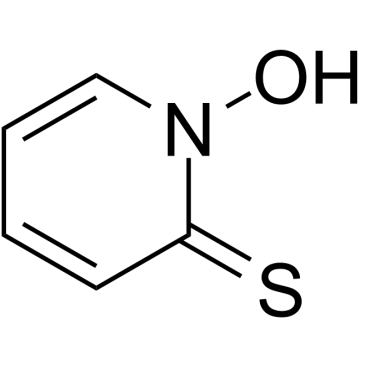
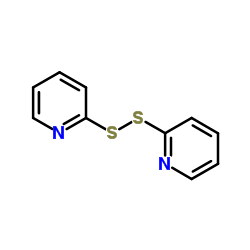

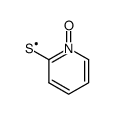
 CAS#:105398-69-4
CAS#:105398-69-4 CAS#:2637-34-5
CAS#:2637-34-5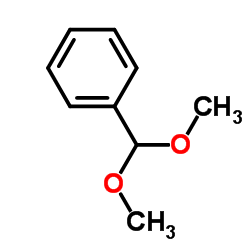 CAS#:1125-88-8
CAS#:1125-88-8 CAS#:114050-31-6
CAS#:114050-31-6 CAS#:64826-51-3
CAS#:64826-51-3 CAS#:91233-19-1
CAS#:91233-19-1 CAS#:60681-90-5
CAS#:60681-90-5